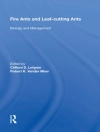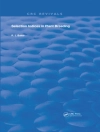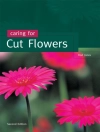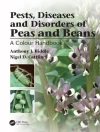A comprehensive reference for the poultry
industry–Volume 1 describes everything from husbandry
up to preservation
With an unparalleled level of coverage, the Handbook of
Poultry Science and Technology provides an up-to-date and
comprehensive reference on poultry processing. Volume 1
describes husbandry, slaughter, preservation, and safety. It
presents all the details professionals need to know beginning with
live poultry through to the freezing of whole poultry and
predetermined cut parts. Throughout, the coverage focuses on one
paramount objective: an acceptable quality and a safe product for
consumer purchase and use. The text includes safety requirements
and regulatory enforcement in the United States, EU, and Asia.
Volume 1: Primary Processing is divided into seven
parts:
* Poultry: biology to pre-mortem status–includes
such topics as classification and biology, competitive exclusion,
transportation to the slaughterhouse, and more
* Slaughtering and cutting–includes the
slaughterhouse building and required facilities, equipment, and
operations; carcass evaluation and cutting; kosher and halal
slaughter; and more
* Preservation: refrigeration and freezing–includes
the biology and physicochemistry of poultry meat in rigor mortis
under ambient temperature, as well as changes that occur during
freezing and thawing; engineering principles; equipment and
processes; quality; refrigeration and freezing for various
facilities; and more
* Preservation: heating, drying, chemicals, and
irradiation
* Composition, chemistry, and sensory
attributes–includes quality characteristics,
microbiology, nutritional components, chemical composition, and
texture of raw poultry meat
* Eggs–includes egg attributes, science, and
technology
* Sanitation and Safety–includes PSE,
poultry-related foodborne diseases, OSHA requirements, HACCP and
its application, and more
İçerik tablosu
PART 1: POULTRY BIOLOGY TO PRE-MORTEM STATUS.
1. Poultry classification/biology.
2. Competitive exclusion.
3. Pre mortem handling.
4. Transportation.
PART 2:SLAUGHTER/CUTTING.
5. The slaughterhouse: building.
6. Slaughtering equipment.
7. Carcass evaluation and cutting.
8. Official control.
9. Packaging.
10. Kosher slaughter.
11. Halal slaughter.
PART 3: PRESERVATION: FREEZING.
12. Biochemical changes.
13. Physicochemical changes.
14. Low temperature storage.
15. Engineer. principles of freezing.
16. Quality of frozen poultry Sendra.
17. Quality of refrigerated poultry.
18. Refrigeration: equipment.
19. Freezing: equipment.
20. Refri./freezing retails.
21. Refri./freezing industr. Facilities.
PART 4 PRESERVATION: HEATING.
22. Heating, drying, chemicals.
23. Irradiation.
PART 5: COMPOSITION, CHEMISTRY, AND SENSORY.
24. Quality characteristics.
25. Chemical composition.
26. Texture and tenderness.
27. PSE.
PART 6: EGGS.
28. Eggs attributes.
29. Eggs Science and Technology.
PART 7: SANITATION AND SAFETY.
Section 1: Sanitation, regulations and disease outbreaks.
30. Chemical residues.
31. Microbiology of fresh poultry meat.
32. Principles of HACCP Wendakeen.
33. HACCP in poultry slaughterhouses.
34. Online-inspection.
35. Poultry/foodborne diseas. in US.
36. Poultry foodborne diseasess in Central and South America.
SECTION 5: WORKERS SAFETYY.
37. OSHA: basic considerations.
38. Etools.
Yazar hakkında
ISABEL GUERRERO-LEGARRETA, Ph D, the Editor, is Professor in
the Biotechnology Department at the Universidad Autónoma
Metropolitana in Mexico. She has expertise in the meat and poultry
sciences; and she has published over eighty manuscripts, five
books, and twenty-nine book chapters.
Y.H. HUI, Ph D, the Consulting Editor, is the Senior
Scientist at Science Technology System and has been the author or
editor of many books on food science and technology.












